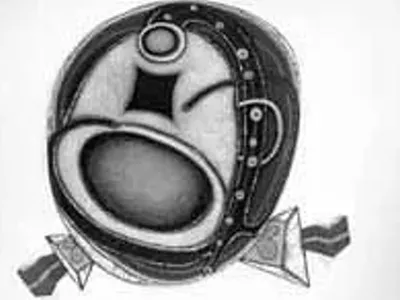
Audio By Carbonatix
[
{
"name": "GPT - Leaderboard - Inline - Content",
"component": "35519556",
"insertPoint": "5th",
"startingPoint": "3",
"requiredCountToDisplay": "3",
"maxInsertions": 100,
"adList": [
{
"adPreset": "LeaderboardInline"
}
]
}
]
Dec. 31, 1999 was a heavy news day, to say the least. Boris Yeltsin resigned. Telegenic millennium celebrations were either under way or about to get under way around the globe. And terrorists released the 155 passengers they had been holding for more than a week on a hijacked Air India jetliner.
The U.S. State Department now contends that the Pakistani military was behind the whole thing – just a little something to raise the hackles of their Hindu neighbors. Not a very amusing game of chicken, if you consider that both India and Pakistan have nuclear weapons.
But what makes the hijacking itself interesting is that the episode ended peacefully, save for a honeymooner who played peek-a-boo with his blindfold one too many times and was stabbed to death by a hijacker. Officials waited out the terrorists and they caved.
Hollywood would have a hard time pumping up this story. Action flicks rely slavishly on well-defined, well-timed plot points for success. The villain (usually swarthy or crazy, or both) appears by surprise, takes control of a building (Die Hard, 1988) or a train (Under Siege 2, 1995) or even an airport (Die Hard 2, 1990) and makes demands. The hero is summoned – clocks tick – brows furrow – something explodes and so on. Hijack movies are in many ways no different.
The problem with them, however, is the plane. There’s not much room to move and not a lot to do. Except wait. So you need a lot of cutaways and diversions, some more ludicrous than others. In Executive Decision (1996), for example, not only are soldiers stealthily loaded onto the hijacked airliner in midair, but a bomb is defused and then defused again.
What makes the film work are the hijackers, clichés and all. Of course, they’re Muslim fundamentalists en route to a suicide mission over Washington, D.C., but they’re also suave gents, well schooled in Western ways, including computers. Ah, now there’s a nightmare for the American mind: zealots beholden to mysterious tenets from the desert who nonetheless understand that most modern and cabalistic code of them all – computer machine language.
The golden age of hijacking was without doubt the 1970s. Prices for tickets were coming down, allowing more of the hoi polloi to see the world while the mystique of jet-setting VIPs from earlier decades still lingered in the public imagination. The world had yet to be made small by the Internet, Air Jordan and CNN.
To fly Pan Am, the sexiest of all airlines, in 1974 was to experience a heady mixture of decadence, adventure and danger. And what danger it was! The PLO was making a bona fide spectacle of itself, aided and abetted by various sympathetic groups in Europe, and OPEC was jacking up oil prices. The Cold War raged in all kinds of crummy outposts. A sort of culminating apotheosis of all these factors can be found in the film Raid on Entebbe (1977), based upon the actual storming of a hijacked plane by Israeli troops in Uganda at the nadir of Idi Amin’s rule.
Faced with such complexities, American cinema kept hijacking a domestic affair. Airport (1970), later lampooned ad nauseam in the Airplane series, was a piece of melodramatic trash written by Arthur Hailey impersonating Sidney Sheldon. When Dean Martin is pilot of a plane and Jacqueline Bisset is the head stewardess, many good things could happen. Unfortunately, they don’t. The villain is more pitiable than menacing, a distraught Midwestern version of Willy Loman.
Then came Airport ‘77, which features a trio of hijackers interested in the priceless art collection that some stuffed shirt is ferrying to Palm Beach with a gang of his fellow snobs along for the ride. The flight is diverted toward the Caribbean but crashes into the Bermuda Triangle, another quintessential ‘70s motif. Tellingly, as these are American hijackers, they are interested in money – not Muhammad. It makes sense then that D.B. Cooper, who absconded from a plane flying over the Northwest with $25,000 and a parachute, endures as a folk hero in some circles.
Still, two decades later, the old villains endure at the international terminal. Air Force One (1997) features a Russian colonel trying to spring his colleague from the gulag so that they can mount some sort of nationalist insurrection. The end of the Cold War, contrary to George Bush Sr.’s happy talk, has made the world more dangerous than ever, unleashing all the fundamentalism and nationalism kept under wraps by the superpowers.
Yet the hypersaturation of television news has robbed even the most sensational events of staying power. All too quickly, horrible images become clichés. This may or may not be the point of Dial H-I-S-T-O-R-Y (1997), a Belgian pseudo-documentary about hijacking. The director, Johan Grimonprez, doesn’t say. He merely trots out a highlight reel of air piracy over three decades, scored to disco music and other sonic offal. The dark waves of history, it seems, are no match for the Day-Glo surfboard that is irony.





